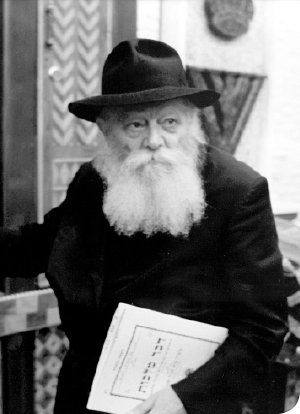Beis Moshiach presents the maamer the Rebbe MH”M delivered on Yud-Alef Shvat 5718, in accordance with the custom established by the Rebbe to review each year a section of the Rebbe Rayatz’s hemshech “Basi L’Gani” of 5710. • This year we focus on the eighth section of the profound and foundational Chassidic discourse.
Translated by Boruch Merkur
 THE EPIC ACCOMPLISHMENT OF THE 7th GENERATION
THE EPIC ACCOMPLISHMENT OF THE 7th GENERATION
1. “I have returned to My garden, My sister, My bride.” On these words, the Midrash Rabba, in its place, comments: “‘To My garden (l’gani)’ – to My bridal chamber (li’g’nuni), to the place where My essence was revealed in the first days of Creation,” for the Ikar Sh’china (the essence of the Divine Presence) was manifest then in the lower realms, in the physical world itself.
But with the sin of the Tree of Knowledge, the Sh’china departed from the earth to the first firmament of the heavens. Subsequent sins caused a further withdrawal of the Sh’china, casting it away from one degree to the next, until it reached the seventh heaven.
Afterwards, righteous people arose, tzaddikim, who drew the Sh’china back downwards. This process reached its pinnacle with Moshe Rabbeinu, leader of the seventh generation [from Avrohom Avinu], and “all sevenths are beloved.” Moshe Rabbeinu’s epic accomplishment is that he completed the entire process of drawing the Ikar Sh’china back down to the psychical plane, bringing it from the first firmament of the heavens to the earth.
To illustrate this achievement of tzaddikim, the verse in T’hillim (37:29) states, “The righteous shall inherit the land and dwell upon it forever (v’yishknu laad aleha),” for they draw down (mashchinim u’mamshichim) G-dliness at the level of “shochen ad marom v’kadosh,” and cause it to dwell in the lower realms, reaching even the physical dimension.
This G-dly manifestation is brought about through the Divine service of iskafia sitra achra, rejecting unholiness, and is’hapcha, sublimating it. In so doing, “the glory of the Alm-ghty is manifest (istalek) in all the worlds,” referring to a revelation of G-dliness known as Ohr HaSovev Kol Almin, a revelation that shines within all worlds equally.
The primary manifestation of this G-dly revelation took place in the Mikdash, G-d’s sanctuary in this world. Regarding the Mikdash it is written, “‘Make for Me a Sanctuary and I shall dwell among them’ – Here it does not say ‘within it’ but ‘within them,’ meaning within each and every Jew.”
One of the services performed in the Mikdash was the offering of sacrifices, which has a dual function: One, it involves offering from the earthly plane and reaching to the Divine, as taught in kabbala that sacrifices ascend to the Ein Sof, the Infinite Divine. Indeed, sacrifices, korbanos, entail the kiruv or dedication (literally, drawing close) of the person’s faculties, etc. Two, this offering elicits a G-dly manifestation described as “reiach nicho’ach – a pleasant fragrance or spirit to G-d,” which is the concept of drawing downward from On High, “I shall dwell among them.”
In this vein, the Mishkan was made of atzei shittim, acacia wood. The word “shittim” here is derived from “shita,” which means “an inclination or predilection,” going “astray” from the path, as it is written, “ki sisteh ishto – should one’s wife go astray” (Naso 5:12), referring to the Jewish soul descending and going astray from the straight path. When there is this shtus d’l’umas zeh, unholy folly, it must be transformed into shtus d’k’dusha, holiness that transcends reason. Thus, the Mishkan was made of atzei shittim, for the entire point of the service of the Mishkan and Mikdash is to transform the shtus of unholiness into shtus d’k’dusha.
The Rebbe Rayatz continues in the maamer that the planks of the Mishkan were made of atzei shittim, acacia wood. The word “keresh – plank” is composed of the letters Kuf-Reish-Shin. It says in Zohar (Preface 2b) that the letters Kuf and Reish signify aspects of unholiness [which is transient, impermanent]. In order to sustain their existence, the Kuf and Reish took among them the letter Shin [“a letter of truth”], enabling them to syphon vitality from the realm of holiness. The ultimate purpose of Divine service is to transform “keresh” into holiness.
The maamer explains that the letters Kuf and Reish resemble the letters Hei and Daled. Although the Reish resembles the Daled in both form and meaning, there is a great difference between them. The Daled has a Yud on its upper right corner, alluding to bittul (humility). Thus, the letter Daled is associated with the realm of holiness. The Reish, on the other hand, has no Yud, indicating that it has no bittul, for which reason it is considered unholy.
(To be continued)